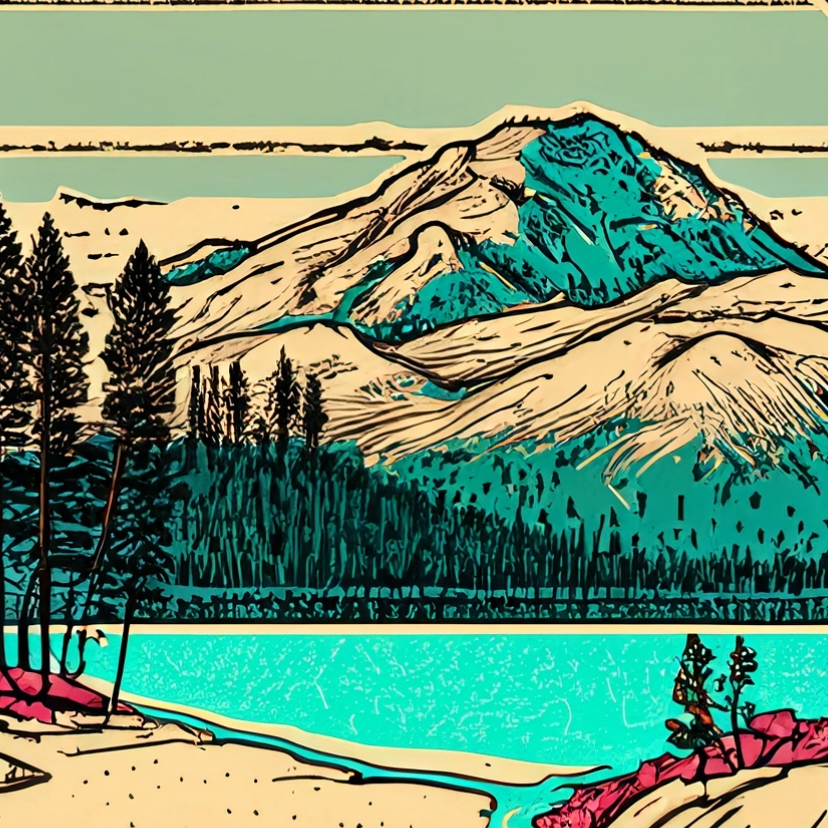Washoe Commissioner Hill Proposes User Tax For Tahoe Basin
What happens when federal and local government agencies build a billion dollar, concrete tourist attraction in North Lake Tahoe, without adequate parking, and that hugs a narrow, two-lane highway?
If you guessed traffic congestion, you must have been graced with a little common sense–or, you’re unfortunate enough to have been ensnared in the mile-long back up on SR-28 while trying to get home or visiting the billion dollar bike/walk path.
Having lived on the North Shore of Lake Tahoe for nearly a decade, I watched (in horror) for years as the excavation of the billion dollar path was carved into the side of the East Shore of Lake Tahoe. What used to be a relatively easy in-and-out of the basin, or an enjoyable hike up Tunnel Creek, has devolved into a California-esque Sigalert of epic and dangerous proportions. Fire evacuation plans? Anyone?
The beautiful vista from Monkey Rock is now scarred with bright red bus lanes and out-of-state cars parked on residential sidewalks of Lakeshore Blvd. Hidden and secluded beaches, predominately used and cared for by locals, are now littered with trash from weekend warriors.
Additionally, when everyone was told to stay home to protect grandma from catching a virus, not many people stayed home. In fact, many came to Lake Tahoe to escape or snap up some property for their primary or secondary residence, which drove up rental and housing prices to astronomical and unaffordable (https://ntpac.us9.list-manage
This influx of new residents and tourists have created so much traffic that Fodor’s recently listed (https://ntpac.us9.list-manage
Yet, tourism is also a significant contributor to revenue–an estimated $5 billion in revenue for the CalNeva basin.
Fodor’s also categorized Tahoe as “natural attractions that could use a break” and proclaimed that “Lake Tahoe has a people problem.”
What is the solution to this congestion?
According to the people behind the “people problem,” their solution is to tax the people who live, work, and visit the basin and force people into electric buses, bikes, or scooters. The code name for this forceful and pricey nudge is referred to as “micro mobility (https://ntpac.us9.list-manage
Late last week, County Commission Chair Alexis Hill (she/her/hers) took to Twitter to announce “user or roadway pricing to limit the vehicles in the basin and incentivize the use of public transit.”
Congestion has reached such a critical point that it’s time to adopt “user or roadway pricing to limit the vehicles in the basin and incentivize the use of public transit,” said Washoe County Commission Chairwoman Alexis Hillhttps://t.co/yD0khJ1Ryz
— Commissioner Alexis Hill (@VoteAlexisHill) July 22, 2023 (https://ntpac.us9.list-manage
In a report (https://ntpac.us9.list-manage
Congestion has reached such a critical point that it’s time to adopt “user or roadway pricing to limit the vehicles in the basin and incentivize the use of public transit,” said Washoe County Commission Chairwoman Alexis Hill in Reno, Nevada, the closest major city, about 20 miles northeast of the lake.
One of an increasing number of people to take that view, Hill knows the idea that would have been dismissed out of hand a decade ago by hotels, casinos, ski resorts and other business concerns opposed to anything that might discourage visitors.
…She acknowledged it won’t be easy, especially because of the multiple jurisdictions involved, including five counties in two states, individual towns, regulators, the Coast Guard and the U.S. Forest Service.
“But honestly, I think people may have recognized we may already be getting to the point of unsustainability,” Hill said.
“When you have folks like Fodor’s say, Don’t go to Lake Tahoe,′ that’s not good for us as a region. We need folks to visit here, but we need a system to manage them,” she said.
People being managed by a system doesn’t sound so nice…or sustainable.
One may suggest, and plenty of residents have at monthly and quarterly community meetings— led by consultants and bureaucrats— that a tourist attraction will, in fact, invite traffic, especially to a remote and mountainous destination.
Prior to the billion dollar path, there were plenty of tourists who sustained our local economy without being “managed by a system.”
If tourists fly into Reno, they will likely rent a car for the duration of their stay.
If tourists are visiting from neighboring California, they will take an easy 90-minute drive to the basin which can result in traffic jams that stretch to Sacramento (https://ntpac.us9.list-manage
Furthermore, the increasingly unpopular “mobility hubs” are in locations in the basin that tourists have to drive to to catch an ecologically-friendly bus.
Lastly, the workforce in the basin is made up of laborers who tend to the uber-wealthy along the lake and the small businesses who make the community stronger and rely on tourism dollars.
The working class can’t use electric bikes, scooters, or buses to carry their equipment or supplies to their job sites.
They rely on their affordable and efficient gas guzzling trucks or cars to haul their equipment, and soon it looks like they will be charged a fee for commuting to, or living in, the basin.
The Globe spoke to a seasoned tourism official who reiterated the concerns held by a variety of local workers and residents of the basin:
“I don’t understand their twisted sustainability logic related to micro-mobility or bussing people around the lake. The Casinos in the basin rely on cars for their business. The newly designed and approved convention center in South Lake Tahoe will rely on cars for their business. This whole idea to eliminate cars from the basin doesn’t make sense. The area is in a location that Californians and tourists can easily drive to and want to drive to in order to tour the area. They aren’t going to be forced into public transit, especially when there is no infrastructure in place to support it.”
The latest fees published by the Tahoe Transportation authority can be found here (https://ntpac.us9.list-manage
As these prices were published in 2019, they are now outdated due to rising energy costs, transportation costs, and inflation.
Commuter and Tourist pricing for Tahoe Basin (Photo: Tahoe Transportation Authority)
We have reached out to both Commissioner Hill and Andy Chapman, CEO of Travel North Tahoe Nevada, (https://ntpac.us9.list-manage
We will update the story with their comments if and when received.
Editors note: Dogs cannot walk on the billion dollar bike path in the summer due to the temperature of the materials used in parts of the trail. Dog booties or wagons are strongly recommended.


